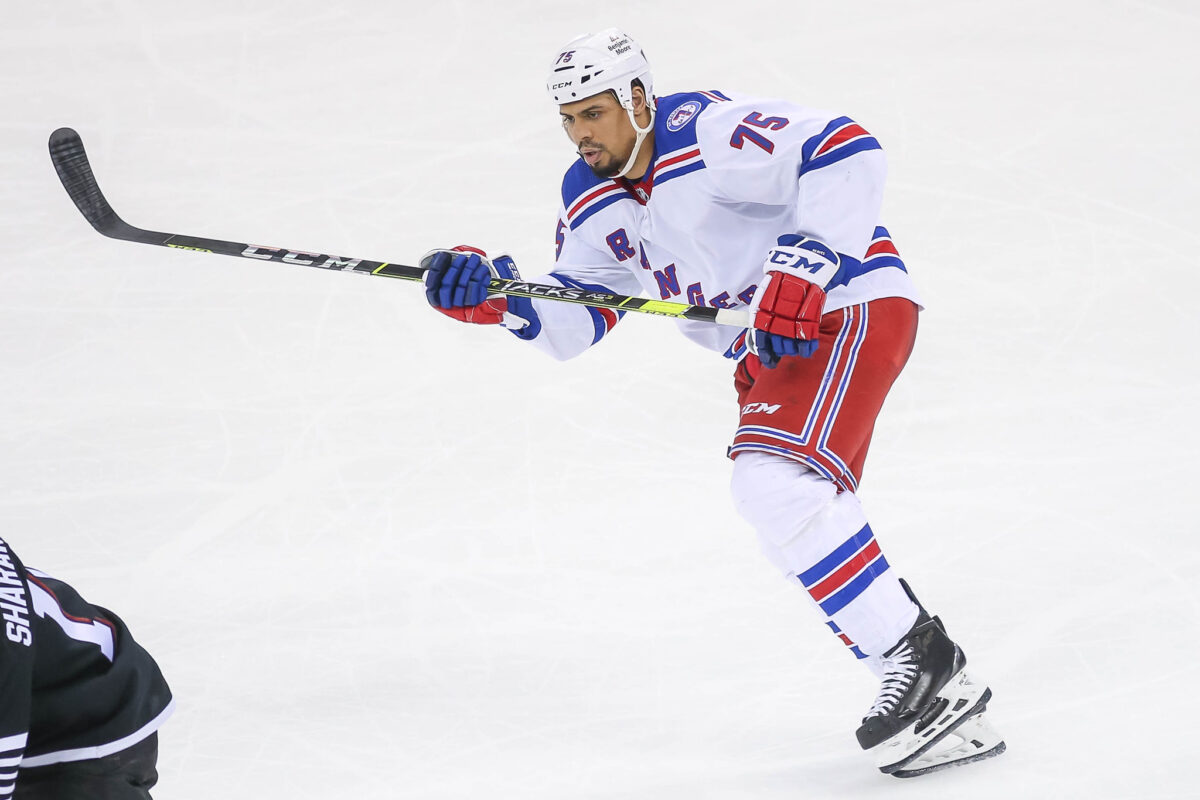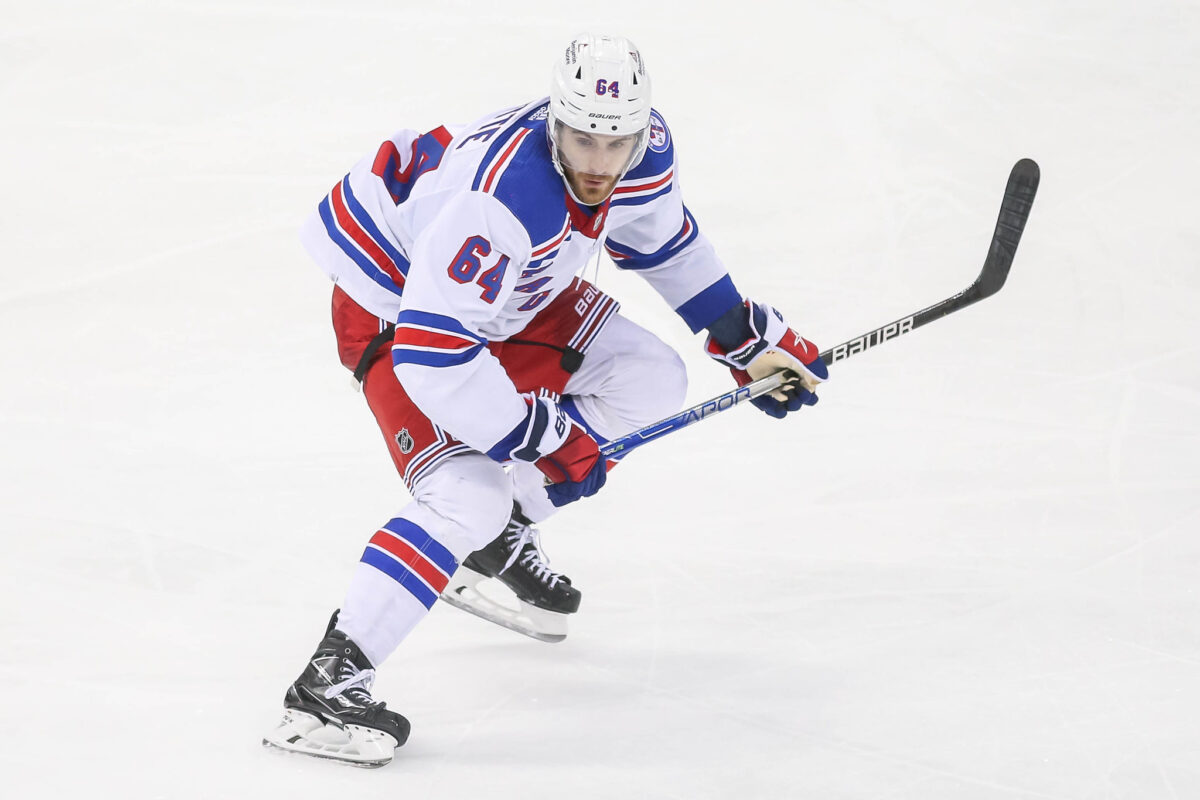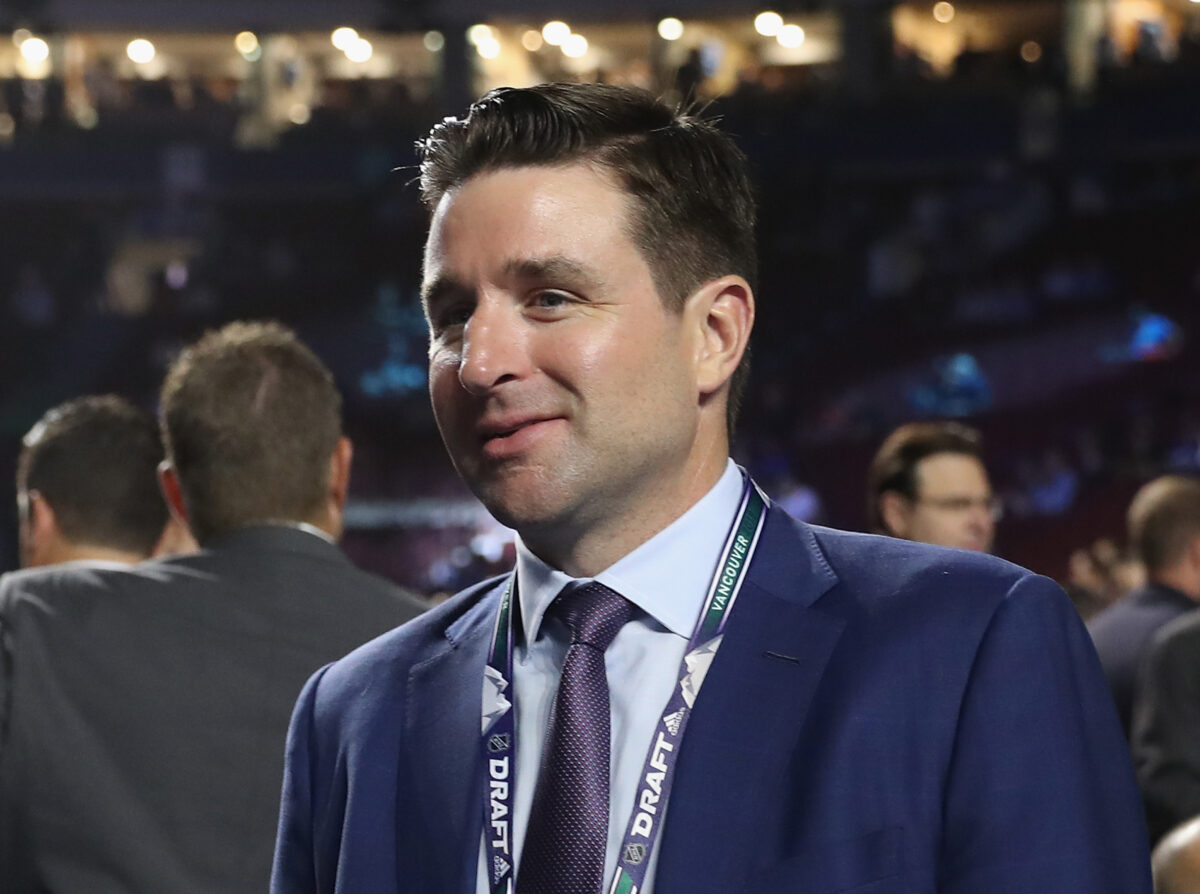New York Rangers general manager Chris Drury could probably be forgiven if he couldn’t help feeling a little smug over the past week.
That’s because Drury took some impressive initiative and made the blockbuster trade his team had to make, acquiring top-six sniper Vladimir Tarasenko and big left-side defenseman Niko Mikkola from the St. Louis Blues on Feb. 9, allowing the Rangers to jump the trade deadline market. It also gave the two new Blueshirts about three more weeks to integrate with their new club than if the GM had waited for trade action to really heat up going into the March 3 deadline.
The price was right, and Drury moved so efficiently that another highly-rumored forward target, Chicago Blackhawks right wing Patrick Kane, sounded a bit like a spurned love interest when discussing his surprise over the Rangers’ speed in getting a deal done that effectively took him out of the running to land at Madison Square Garden.

Drury, though, has demonstrated himself to be anything but smug or self-congratulatory in his brief tenure running the Rangers’ personnel operations. It’s therefore easier to assume that he’s already taking advantage of the breathing room created by his early big swap to explore more ways to improve his roster for another deep playoff run.
The top area for that improvement is surely the bottom-six forward group, and most specifically the Rangers’ fourth line, which is in desperate need of an upgrade and an identity – a situation of which Drury is no doubt keenly aware.
Drury’s 2022 Deadline Moves Were Pivotal to Rangers’ Playoff Success
After all, it was Drury, in his first full season in charge in 2021-22, who impressively addressed the need for fourth-line help by acquiring pesky forward Tyler Motte as part of a whirlwind of deadline deals that brought in four rental players. Like his fellow deadline pickups, Motte’s work proved integral to the club’s run to the Eastern Conference Final, with his speed, penalty-killing, forechecking and ability to agitate making a big impact – even though Rangers fans seem to overstate his effect by more than a little bit on regular basis.
Drury also had to have noticed the postseason efforts of now-departed veteran Ryan Reaves, brought in as an enforcer and fourth-line muscle player in the summer of 2021. Among Reaves’ myriad of contributions in his season-plus as a Ranger were his performances in the club’s seven-game playoff victories over the Pittsburgh Penguins and Carolina Hurricanes. His big hits and nasty edge made him a key factor in both series, and he often teamed with Motte on a consequential fourth forward unit.

And the general manager can’t possibly have missed the fact that, as coach Gerard Gallant has worked throughout this season to discover the perfect combinations up front, the team’s fourth line has become little more than a dumping ground for extra players, a rotating hodgepodge of personnel that lacks a clear purpose or personality.
That won’t fly if the Blueshirts plan on getting further than they did last spring. Unlike then, when the Rangers had essentially unlimited deadline cap space, Drury doesn’t have much left to work with on such an endeavor, with a projected $1.6 million in room by March 3. Yet he’s sure to look at the problem as an opportunity, a chance to improve his team with a lower-stakes trade that delivers big value – similar to three of his four deadline acquisitions in 2022.
Does Drury want a speed-and-defense, matchup-type fourth line that could be deployed consistently against an opponent’s top six? Would he prefer to go heavy with a Crash Line-esque unit? What seems certain is that the GM is willing to use every bit of his scant deadline cap room to do something. Let’s look at a few options that Drury could attempt to add, which would shape the ethos of the fourth unit as the games get more meaningful down the stretch of the regular season and into the playoffs.
Tyler Motte
Drury wouldn’t have to stray too far if he wants to pick up a Motte-type player when he can just try again for the real thing. Motte is working on a one-year, $1.35 million contract with the Ottawa Senators this season – which would fit snugly into the Rangers’ remaining cap space – a deal he took when the free-agent market for secondary players didn’t develop in the offseason due to the pandemic-depressed salary cap. The 27-year-old missed most of January due to injury, but he’s healthy now and has averaged about 11 minutes per game in four contests since returning. The Senators have little chance of making the playoffs in what’s been a disappointing season, so Motte should be readily available between now and the deadline.

While it’s not exactly reacquiring Esa Tikkanen for another playoff run three years after he helped the Rangers to the 1994 Stanley Cup, the Blueshirts would welcome a return engagement that goes half as well as Tikkanen’s did 26 years ago. Motte, who has three goals and six assists in 36 games this season, scored twice in 15 postseason contests with the Rangers last year. His game plays well in the playoffs, and a second go-round on Broadway would give Gallant a skilled penalty-killer, straight-line forechecker and energy guy who could be paired with Barclay Goodrow and perhaps Jake Leschyshyn on a potential shutdown unit that could be deployed liberally against many top scoring lines.
Nick Ritchie
If Drury envisions a heavier bottom-six alignment, the NHL’s unofficial dumping ground for bad contracts and shopping mall for deadline upgrades might be worth a look. That would be the Arizona Coyotes, who seem all but sure to trade defensemen Jakob Chychrun and Shayne Gostisbehere by March 3 and have another intriguing trade target in huge forward Nick Ritchie. The 6-foot-3, 236-pound left wing brings a size-and-power game below the circles and in front of the net – which the Rangers could sorely use – and that style often dominates in the playoffs.

Ritchie, with nine goals and 12 assists in 51 games, is a pending unrestricted free agent and carries a $2.5 million cap hit. The Rangers would need the Coyotes to retain half of that, which would further drive up the price of a player that should be in some demand at the deadline. Ritchie would be a good fit on the fourth line in New York but can also move up, but he’d at the very least bring a bulkier, tougher approach to the bottom forward unit.
Fourth-Line Center
We mentioned the Coyotes, right? Well, they have another intriguing option should the Rangers look to solidify things down the middle instead of at wing on the fourth line. That’s Nick Bjugstad, who at 6-6 can score a little (13 goals), kill penalties and win some faceoffs. His $900,000 cap hit and pending UFA status would makes him all the more attractive to Drury, although that will be the case for plenty of interested teams.
Related: Rangers: 3 Teams Who Could Target Kravtsov at 2023 Deadline
There’s also the Blues’ Noel Acciari and the San Jose Sharks’ Nick Bonino as veteran mid-range center possibilities, though would adding one of them help to create a sense of purpose for the fourth line and represent a vast upgrade from Leschyshyn? Gallant likes the freedom to move Goodrow around the lineup, but he’s a strong option at center and could find himself in the middle of the fourth unit to start the playoffs.
Drury Can’t Afford Not to Upgrade Fourth Forward Unit
What seems certain is that the club’s bottom three forward spots are nothing more than a work in progress. Vitali Kravtsov, who could be traded before the deadline, isn’t a fit on the fourth line, and Julien Gauthier might ideally be an extra forward come the tournament. Using the fourth line to simply fill out the lineup on a nightly basis adds little, and it will add even less in the postseason, when depth of contribution is key.

Drury deserves plenty of kudos for making the biggest move to fortify his club for a championship chase so early in the process. The GM, however, might be kicking himself if he doesn’t finish the pre-deadline work and make a key fourth-line pickup that could prove crucial in the playoffs – just as he did last year.